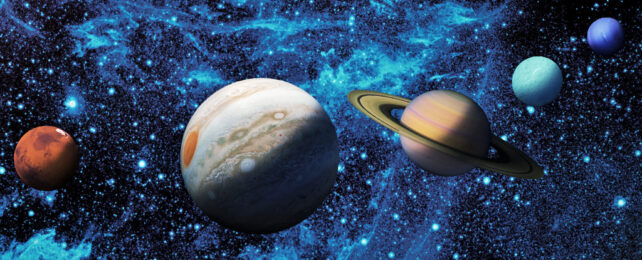This week, a rare five-planet alignment will occur in our night sky, according to StarWalk.
But you'll need very clear skies, impeccable timing, an unobstructed view of the eastern horizon, and probably some binoculars or telescope if you want to spot all five.
How to see this week's rare 5-planet alignment
On the morning of June 17, about an hour before sunrise look to the east. There, you'll see a bright object near the horizon, Jupiter. It will be the brightest of the five planets and the easiest one to spot. You can't miss it.
After that, look slightly up and to the right. There, you should be able to see Saturn over the southeastern horizon. It will appear dimmer and smaller than Jupiter, but should still be visible with the naked eye.
After that, you're next best bet is to spot Mercury. It will be down and to the left of Jupiter, just barely above the horizon, between the eastern and northeastern horizons. After that, it gets tricky.
The last two planets, Neptune and Uranus, are not only the farthest from Earth but also the faintest in the sky. Unless you have incredibly clear skies devoid of light pollution, you'll probably need binoculars or a telescope to spot these two planets.
Neptune will be about halfway between Jupiter and Saturn, and Uranus will be halfway between Jupiter and Mercury. So, if you've been following, the planets will march across the sky, from lowest to highest, in the following order: Mercury, Uranus, Jupiter, Neptune, and last but not least, Saturn.
To help us figure this all out, we used the astronomy software app Stellarium, which is free to download.
A planetary alignment is what we observe from Earth and not an actual planetary parade
A planetary alignment is when multiple planets appear in Earth's sky on the same side of the Sun at the same time, according to Star Walk.
The event isn't actually the planets lining up in some sort of planet parade in our Solar System. Rather, it's a visual phenomenon when we can see the planets close together in a small section of the sky.
Nevertheless, this alignment is still beautiful and rare. The next worthwhile 5-planetary alignment, according to StarWalk, won't happen again until 8 September 2040.
Your best chance to see the alignment is before sunrise on June 17
It may be difficult to spot the planets amongst other stars, including constellations. StarWalk said an app such as Sky Tonight could be helpful for finding and identifying the planets.
For some people, the planet parade will be visible days before and after June 17, but the 17th is the best date for viewing the planets because that's when they'll shine brightest.
This article was originally published by Business Insider.
More from Business Insider: